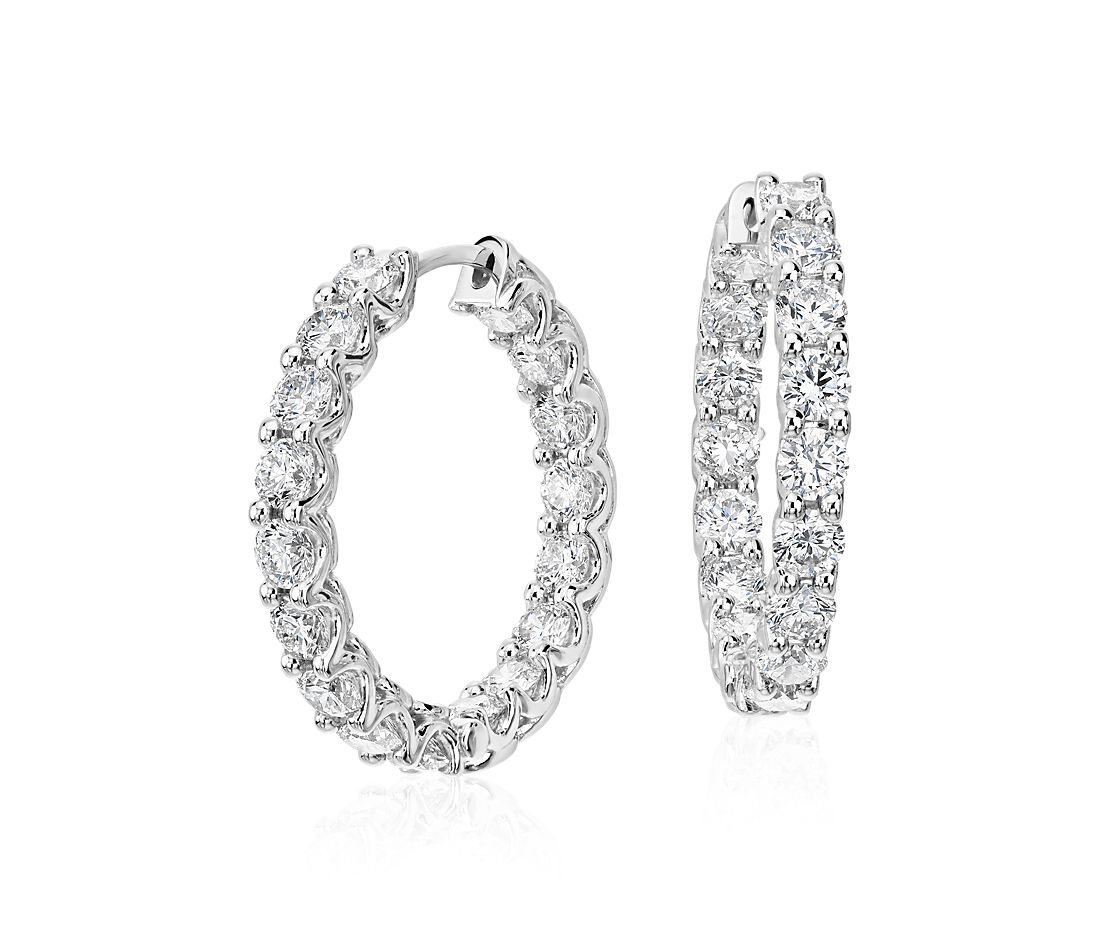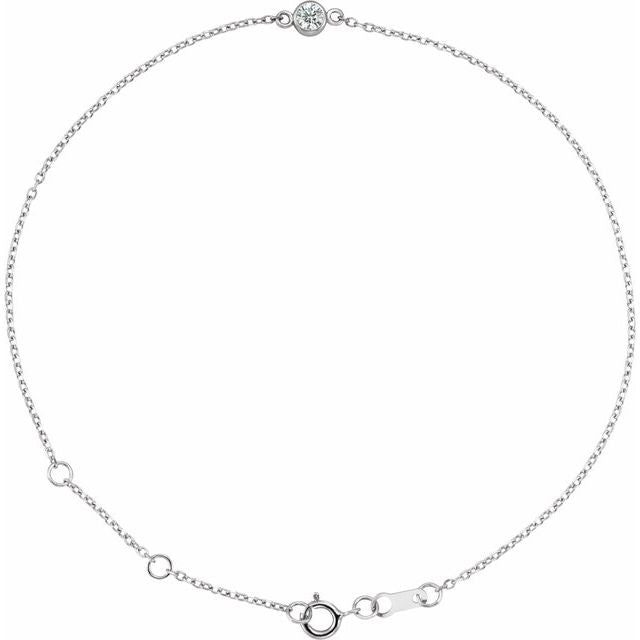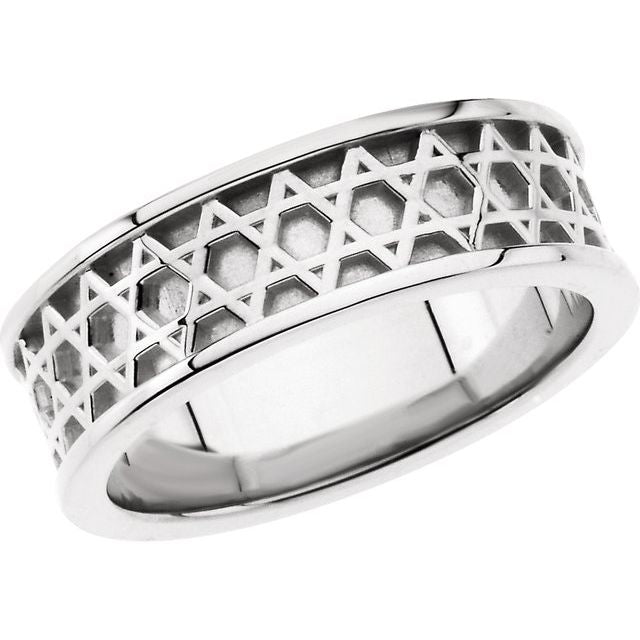The Most Common Jewelry Repair Mistakes and How to Avoid Them
Jewelry holds a special place in our hearts. Whether it's a diamond engagement ring that symbolizes eternal love, a family heirloom passed down through generations, or that statement necklace that perfectly completes your favorite outfit—these precious items often carry both monetary and sentimental value. But what happens when your beloved pieces break, tarnish, or simply need maintenance? Many of us have faced the dilemma of jewelry repair at some point, and unfortunately, mistakes in this process can be costly, both financially and emotionally.
In my years of observing the jewelry repair industry, I've witnessed countless avoidable errors that have led to damaged pieces, disappointed owners, and unnecessary expenses. This comprehensive guide aims to shed light on the most common jewelry repair mistakes and provide practical advice on how to avoid them. Whether you're a jewelry enthusiast or simply someone who wants to preserve their precious items, this article will equip you with the knowledge to make informed decisions about jewelry repair.

DIY Disasters: When Home Repairs Go Wrong
There's something admirable about the do-it-yourself spirit. YouTube tutorials and craft blogs have empowered many of us to tackle projects we might have previously left to professionals. However, when it comes to jewelry repair, DIY approaches can often lead to disastrous results.
One of the most common mistakes people make is attempting to fix broken chains at home. It might seem simple enough—just connect the broken links, right? Unfortunately, it's rarely that straightforward. Most fine jewelry chains require specialized tools and techniques to repair properly. Using household pliers can crush delicate links, and improper soldering can weaken the entire chain, making it more prone to breaking again in the future.
Another frequent DIY disaster involves ring sizing. Perhaps your ring feels a bit loose, and you've heard about those plastic ring guards or sizing beads that can be applied at home. While these temporary solutions might work for costume jewelry, they can damage fine metals and stones. The adhesives used in these products can react with precious metals, causing discoloration or even structural damage over time.
Stone setting is yet another area where amateur repairs often go awry. Loose stones require professional attention, as improper setting can lead to lost gems or damaged settings. The prongs that hold your diamonds or other precious stones need to be carefully examined and adjusted with specialized tools to ensure they're secure without being overly tight, which could crack the stone.
The allure of super glue is particularly dangerous in jewelry repair. While it might seem like a quick fix for a broken piece, it can cause irreparable damage. Super glue is not designed for jewelry and can discolor metals, cloud gemstones, and make future professional repairs nearly impossible. Once super glue has been applied, removing it often requires harsh chemicals that can further damage your precious items.
Instead of risking these DIY disasters, consider consulting with a professional jeweler for repairs. Even if you ultimately decide to attempt a simple fix yourself, getting expert advice first can save you from costly mistakes. Many jewelers offer free consultations and can provide guidance on whether a repair is suitable for DIY or requires professional attention.

Choosing the Wrong Repair Professional
Not all jewelry repair professionals are created equal. One of the most significant mistakes people make is entrusting their precious items to underqualified or inexperienced technicians. The jewelry repair industry encompasses a wide range of specialists, from master goldsmiths with decades of experience to retail employees with minimal training.
Many consumers make the error of assuming that any jewelry store can handle all types of repairs. In reality, different jewelers specialize in different areas. Some excel at antique restoration, while others focus on modern pieces. Some have expertise in specific materials like platinum or particular gemstones. Choosing a jeweler whose expertise doesn't align with your repair needs can result in subpar work or even additional damage.
Another common mistake is prioritizing cost over quality. While it's natural to seek out affordable options, extremely low prices often reflect a lack of expertise, inferior materials, or rushed workmanship. Quality jewelry repair requires time, skill, and appropriate materials—all of which come at a cost. Opting for the cheapest option might save you money initially but could lead to more expensive repairs down the line or even irreparable damage.
Many consumers also fail to check credentials and reviews before selecting a repair professional. Reputable jewelers typically hold certifications from recognized industry organizations and have positive customer feedback. Taking the time to research potential repair professionals can save you from entrusting your valuable pieces to someone without the necessary skills or reputation.
Communication breakdowns represent another frequent issue when working with jewelry repair professionals. Failing to clearly articulate what you want or not understanding what the jeweler is proposing can lead to disappointing results. Always ensure you have a detailed conversation about the repair process, expected outcomes, timeline, and cost before proceeding.
To avoid these mistakes, consider seeking recommendations from friends or family members who have had positive experiences with jewelry repairs. Industry associations like the American Gem Society or the Jewelers of America can also help you locate reputable professionals in your area. When you visit a jeweler, don't hesitate to ask about their experience, training, and approach to the specific repair you need.
Inadequate Insurance and Documentation
Many jewelry owners overlook the importance of proper insurance and documentation when submitting pieces for repair. This oversight can lead to significant problems if something goes wrong during the repair process.
One common mistake is failing to verify that the repair shop has adequate insurance coverage. Professional jewelers should carry insurance that protects your items while they're in the shop's possession. Before leaving your valuable pieces, ask about the store's insurance policy and what it covers. Some policies might have limitations or exclusions that could affect your item.
Another frequent error is not obtaining detailed documentation of your jewelry before repairs begin. Without proper documentation, it can be difficult to prove the condition, specifications, or even the existence of your item if disputes arise. Always request a detailed receipt that includes descriptions of your jewelry, including metal type, gemstone details, weight, and any distinguishing features. Many reputable jewelers will also take photographs of items before beginning work.
Some consumers also make the mistake of not clarifying the terms of the repair agreement. What happens if the repair doesn't meet your expectations? Is there a warranty on the work performed? What is the timeline for completion? Getting these details in writing can prevent misunderstandings and provide recourse if problems occur.
For particularly valuable items, consider having an independent appraisal done before submitting the piece for repair. This provides an unbiased assessment of your jewelry's condition and value, which can be invaluable if questions arise later. While this adds an extra step and cost, it provides significant protection for high-value pieces.
Neglecting Regular Maintenance
Many jewelry problems that eventually require major repairs could have been prevented with regular maintenance. Neglecting routine care is a common mistake that can lead to more significant issues over time.
One frequent oversight is failing to have prongs checked regularly on stone settings. Over time, the prongs that hold gemstones in place can wear down or become bent, increasing the risk of losing valuable stones. Professional jewelers recommend having prong settings checked every six to twelve months, depending on how frequently the item is worn.
Another maintenance mistake involves improper cleaning methods. Using harsh chemicals, ultrasonic cleaners, or abrasive materials on jewelry can damage certain gemstones, pearls, or delicate metalwork. Different types of jewelry require different cleaning approaches, and using the wrong method can lead to unnecessary damage that requires professional repair.
Many people also make the error of wearing jewelry during activities that can cause damage. Swimming in chlorinated pools, applying lotions or perfumes, exercising, or doing household chores while wearing fine jewelry can expose your pieces to chemicals, impacts, and abrasions that gradually degrade their condition. Developing good habits about when to remove your jewelry can significantly reduce the need for repairs.
Chain maintenance is another commonly neglected area. Chains, especially those made of fine links, should be cleaned regularly and inspected for weak points. Many people wait until a chain breaks before seeking repair, but preventative maintenance can identify and address weak links before they fail completely.
To avoid these maintenance-related repair issues, establish a relationship with a trusted jeweler who can provide regular check-ups for your valuable pieces. Many jewelers offer cleaning and inspection services at reasonable prices or even for free for regular customers. Consider scheduling these check-ups seasonally or at least annually for frequently worn items.
Unrealistic Expectations About Repairs
Misunderstanding what can and cannot be repaired is another common source of disappointment in jewelry repair. Many consumers have unrealistic expectations about what is possible, leading to frustration when repairs don't meet their hopes.
One frequent misconception involves severely damaged gemstones. While minor chips or scratches in some stones can be polished out, deeply cracked or shattered gemstones typically cannot be repaired. In most cases, the only solution is to replace the stone entirely. Understanding the limitations of gemstone repair can help you set realistic expectations and make informed decisions about whether a repair is worthwhile.
Another area of unrealistic expectations concerns antique or vintage jewelry. These pieces often feature craftsmanship or materials that are difficult or impossible to replicate exactly today. When seeking repairs for antique jewelry, it's important to understand that perfect matching of patina, color, or technique may not be possible. Working with a specialist in antique jewelry restoration can help achieve the best possible results while preserving the piece's character and value.
Many consumers also have misconceptions about the time required for quality repairs. Complex jewelry work cannot be rushed without compromising quality. Expecting same-day service for intricate repairs is unrealistic and may lead you to choose a repair shop that cuts corners to meet tight deadlines. Quality work takes time, and understanding this can help you plan accordingly and make arrangements for important pieces that you wear regularly.
Cost expectations represent another common area of misunderstanding. Fine jewelry repair requires specialized skills, tools, and materials—all of which come at a price. Being shocked by repair quotes often leads consumers to seek out cheaper alternatives that may deliver inferior results. Having general knowledge about what different repairs typically cost can help you budget appropriately and recognize when a quote is suspiciously low.
To avoid disappointment stemming from unrealistic expectations, have detailed conversations with your jeweler before proceeding with repairs. Ask what is and isn't possible, what the repaired piece will look like, how long the process will take, and what alternatives exist if a perfect repair isn't feasible. A reputable jeweler will be honest about limitations and help you understand the likely outcomes of different repair approaches.
Ignoring Material Compatibility Issues
Many jewelry repair problems stem from a lack of understanding about material compatibility. Different metals, gemstones, and construction techniques don't always work well together, and ignoring these incompatibilities can lead to failed repairs or damaged pieces.
One common mistake involves mixing metals in repairs. For example, using sterling silver solder on a fine gold piece can create weak points and discoloration. Similarly, attempting to combine platinum and white gold in a repair can lead to structural issues due to their different properties. Professional jewelers understand which metals are compatible and use appropriate materials for each repair.
Another frequent error concerns heat-sensitive gemstones. Many repair techniques involve applying heat, which can damage certain stones. Emeralds, opals, pearls, and several other gemstones can crack, discolor, or otherwise deteriorate when exposed to high temperatures. Failing to remove heat-sensitive stones before soldering or other heat-based repairs can result in irreparable damage.
Adhesive compatibility represents another overlooked issue. Different types of jewelry require different adhesives, and using the wrong type can lead to failed repairs or damage. For example, the adhesive appropriate for bonding metal components differs from what should be used for securing gemstones or repairing organic materials like pearl or coral.
Many consumers and even some less experienced repair technicians make the mistake of not considering the original construction methods when planning repairs. Antique jewelry, in particular, often features techniques that differ from modern approaches. Attempting to repair these pieces using contemporary methods can compromise their integrity and value.
To avoid material compatibility issues, work with jewelers who take the time to examine your piece thoroughly and explain their repair approach. Don't hesitate to ask questions about the materials and techniques they plan to use. For valuable or antique pieces, consider seeking opinions from multiple specialists before proceeding with repairs.
Overlooking Structural Integrity
Focusing solely on the visible aspects of jewelry repair while neglecting structural integrity is a mistake that can lead to recurring problems. A repair might look good aesthetically but fail to address underlying structural weaknesses.
One common example involves ring shanks that have become thin over time. Simply soldering a broken shank back together without addressing the overall thinning will likely result in another break soon after. Proper repair often requires rebuilding the shank to restore its original thickness and strength.
Another frequently overlooked structural issue concerns worn settings. The metal that holds gemstones in place gradually wears down with regular wear. Merely tightening loose prongs without addressing metal loss can create a false sense of security while leaving stones vulnerable to falling out. In many cases, prongs need to be rebuilt or replaced entirely to ensure long-term security.
Chain repairs often suffer from similar oversights. Repairing a single broken link without examining the entire chain for wear can lead to repeated breaks in different areas. Professional jewelers should assess the overall condition of a chain and recommend comprehensive reinforcement if multiple links show signs of weakness.
Hinge mechanisms in bracelets, lockets, and other articulated jewelry pieces represent another area where structural integrity is commonly overlooked. A clasp might be repaired while the hinge that's showing signs of wear is ignored, leading to future failures. Complete repair should address all components showing wear, not just the obviously broken parts.
To avoid these structural integrity issues, ask your jeweler for a comprehensive assessment of your piece before proceeding with repairs. Request information about any potential weak points, even if they're not currently broken, and discuss preventative reinforcement options. Sometimes paying a bit more for a thorough repair now can save you from more costly repairs in the future.
Improper Storage and Handling After Repairs
Even the most skillfully repaired jewelry can suffer damage if improperly stored or handled after the repair is complete. Many consumers make the mistake of not adjusting their care routines to protect newly repaired areas.
One common error involves immediately returning to wearing repaired jewelry during inappropriate activities. Newly soldered joints, reset stones, or reinforced components may need time to settle and should be protected from stress initially. Following your jeweler's guidance about when and how to resume wearing repaired pieces can prevent immediate damage to fresh repairs.
Improper storage represents another frequent post-repair mistake. Different types of jewelry require different storage approaches to prevent damage. Storing pieces together in a jumbled jewelry box can lead to scratches, tangled chains, and bent components. Soft pouches, individual compartments, or specialized jewelry boxes with separate sections help protect your pieces, including newly repaired areas that might be particularly vulnerable.
Many people also make the mistake of not establishing new care routines after repairs. If your jewelry required repair due to specific wearing habits or exposure to certain conditions, continuing those same practices will likely lead to similar damage in the future. Use the repair experience as an opportunity to reassess how you wear and care for your jewelry.
Another overlooked aspect of post-repair care involves regular professional check-ups. Many jewelers offer free inspections of pieces they've repaired, allowing them to catch and address minor issues before they become major problems. Failing to take advantage of these follow-up services can mean missing early warning signs of recurring issues.
To avoid these post-repair mistakes, ask your jeweler for specific care instructions when you pick up your repaired jewelry. Many professionals will provide guidance on wearing, cleaning, and storing your specific piece based on its materials and construction. Following this expert advice can significantly extend the life of your repairs and your jewelry overall.
The Emotional Cost of Jewelry Repair Mistakes
Beyond the financial implications, jewelry repair mistakes often carry significant emotional costs that are frequently overlooked. Understanding these emotional aspects can help motivate proper care and decision-making around jewelry repairs.
Many people underestimate the emotional impact of damaged or lost jewelry, especially pieces with sentimental value. Family heirlooms, wedding rings, or gifts from loved ones carry emotional significance that far exceeds their monetary value. When these pieces are damaged further during improper repairs, the sense of loss can be profound. Taking the time to find qualified repair professionals demonstrates respect for both the item and the emotions it represents.
Another emotional aspect involves the stress and anxiety that can accompany the repair process. Entrusting valuable or meaningful items to someone else can be difficult, and this anxiety is compounded when repairs go wrong or take longer than expected. Clear communication, proper documentation, and choosing reputable professionals can help alleviate this emotional burden.
Many people also experience regret after making hasty decisions about jewelry repairs. Whether it's attempting a DIY fix that causes more damage or choosing an unqualified repair person to save money, the resulting regret can last far longer than any financial impact. Taking time to research options and make informed decisions can prevent this emotional fallout.
For some, damaged jewelry represents lost connections to the past or to loved ones. When repairs alter the character or appearance of meaningful pieces, these connections can feel diminished. Working with repair professionals who understand and respect the sentimental value of your jewelry can help preserve these important emotional connections.
Conclusion: A Thoughtful Approach to Jewelry Repair
Jewelry repair doesn't have to be a source of stress, disappointment, or financial loss. By understanding and avoiding the common mistakes outlined in this article, you can approach the process with confidence and increase the likelihood of satisfactory outcomes.
Remember that quality jewelry deserves quality care. The craftsmanship, materials, and sentimental value of fine jewelry justify investing in proper maintenance and professional repairs when needed. While it might be tempting to cut corners or seek quick fixes, the long-term preservation of your precious items depends on thoughtful, informed decisions.
Establishing a relationship with a trusted jeweler before emergencies arise can make the repair process much smoother. Regular maintenance visits allow your jeweler to become familiar with your collection and provide personalized advice about care and preservation. When repairs are needed, this established relationship provides a foundation of trust and understanding.
Finally, view jewelry repair as an investment in preserving both the financial and emotional value of your pieces. Well-maintained and properly repaired jewelry can last for generations, carrying stories and memories forward through time. By avoiding common repair mistakes, you're not just protecting material objects—you're preserving the connections, celebrations, and milestones they represent.
Whether you're dealing with a family heirloom that needs restoration or a favorite everyday piece that requires maintenance, approaching jewelry repair with knowledge and care will help ensure that your precious items continue to bring joy for years to come.
References
American Gem Society. "Jewelry Care & Cleaning." https://www.americangemsociety.org/jewelry-care-cleaning/
Jewelers of America. "Find a Jeweler." https://www.jewelers.org/ja/members/find-a-jeweler
Gemological Institute of America. "Jewelry Care." https://www.gia.edu/gem-encyclopedia-jewelry-care
International Gem Society. "Jewelry Repair: Tips for Consumers." https://www.gemsociety.org/article/jewelry-repair/
Jewelers Vigilance Committee. "Consumer Protection." https://jvclegal.org/consumer-protection/
The Knot. "Ring Maintenance 101." https://www.theknot.com/content/ring-maintenance-101
National Association of Jewelry Appraisers. "Find an Appraiser." https://www.najaappraisers.com/find-an-appraiser/
Society of American Silversmiths. "Care of Silver." https://www.silversmithing.com/care.htm






















